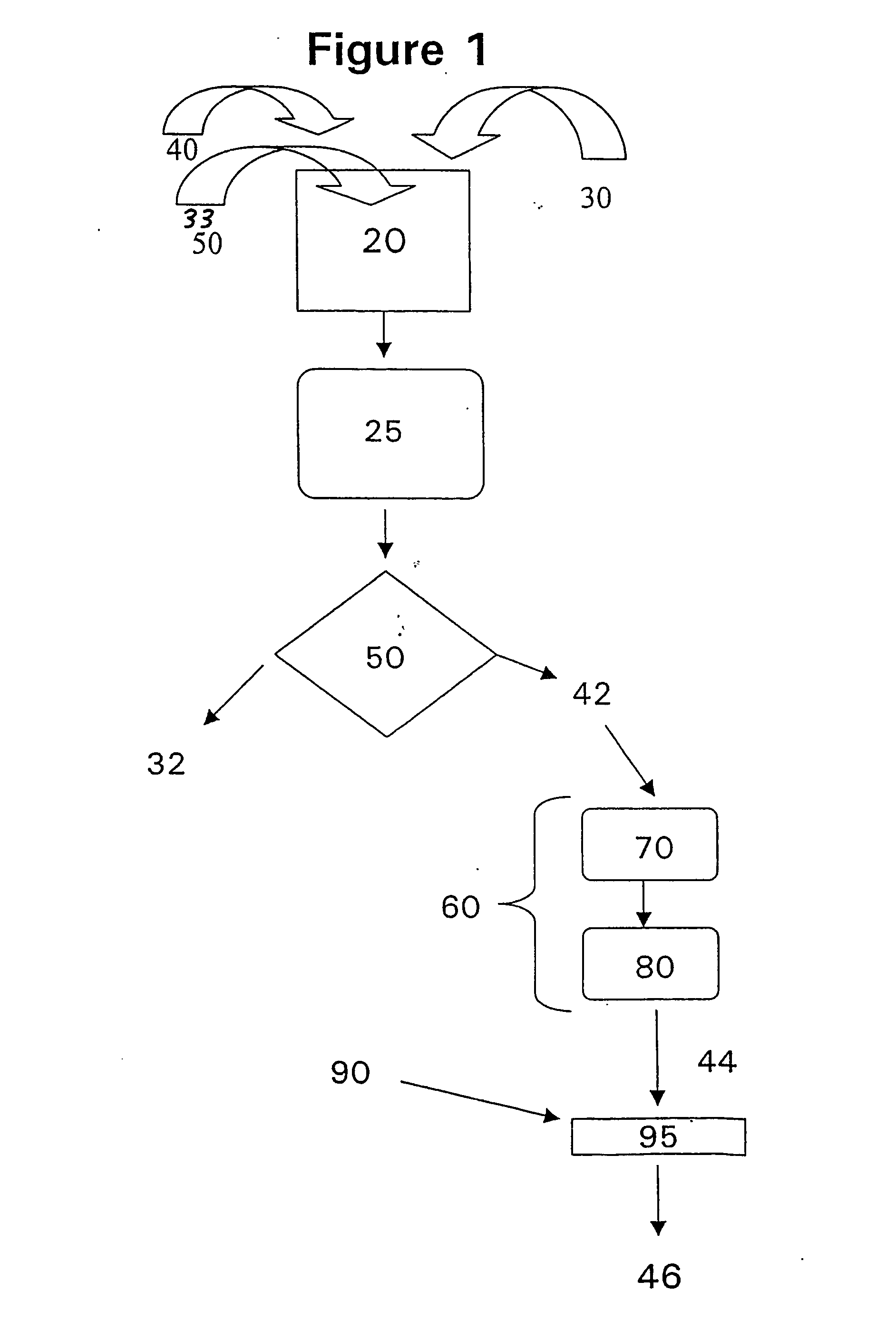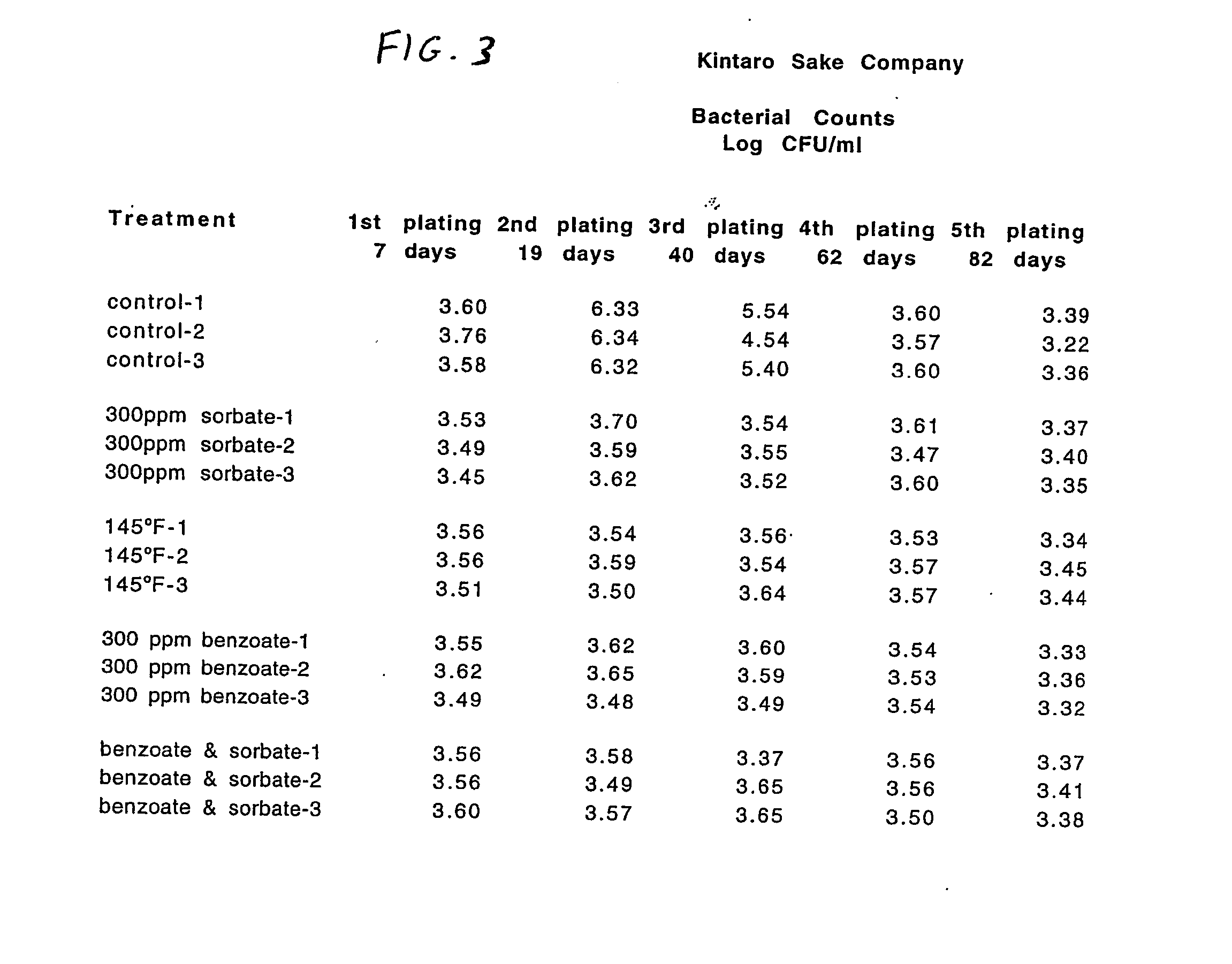Infused sake and process for making same
- Summary
- Abstract
- Description
- Claims
- Application Information
AI Technical Summary
Benefits of technology
Problems solved by technology
Method used
Image
Examples
Embodiment Construction
[0025] The following description is provided to enable any person skilled in the art to make and use the invention and sets forth the best modes contemplated by the inventors of carrying out his invention. Various modifications, however, will remain readily apparent to those skilled in the art, since the general principles of the present invention have been defined herein specifically to provide a method for producing stable sake flavored with whole fruit or whole fruit concentrates.
[0026] This invention relates to a method for flavoring sake with fresh produce. FIG. 1 shows a flow chart of the method of making infused sake according to the present invention. As previously explained, an “infused” product is produced by soaking chopped whole fruit or other flavor giving produce (e.g., herbs or spices) in sake. Alternatively, whole fruit or produce concentrate can be blended with sake to give a similar flavored product. Concentrate is especially attractive for producing the flavored ...
PUM
 Login to View More
Login to View More Abstract
Description
Claims
Application Information
 Login to View More
Login to View More - R&D Engineer
- R&D Manager
- IP Professional
- Industry Leading Data Capabilities
- Powerful AI technology
- Patent DNA Extraction
Browse by: Latest US Patents, China's latest patents, Technical Efficacy Thesaurus, Application Domain, Technology Topic, Popular Technical Reports.
© 2024 PatSnap. All rights reserved.Legal|Privacy policy|Modern Slavery Act Transparency Statement|Sitemap|About US| Contact US: help@patsnap.com










